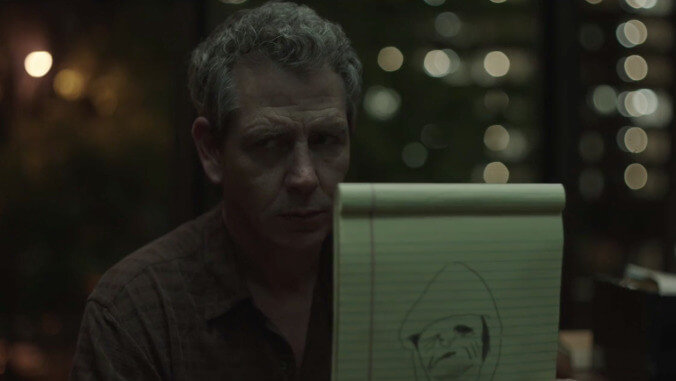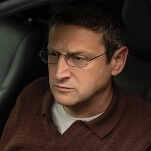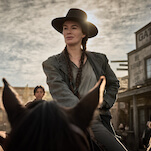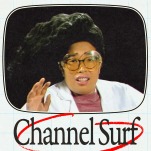“You can’t catch murder,” Holly Gibney tells the bartender who opens her eyes to the direction she’s already headed. “It’s not a virus.” It’s a moment in which The Outsider’s most clear-eyed character denies what she, deep down, already knows to be true, something nearly every other character on the show does with great frequency. That’s where this show lives: In the space between what a person’s practical mind is willing to believe and what the hair on the back of their neck insists is true.
It’s a curious moment for that character, played with appropriate unease by Cynthia Erivo. It’s difficult to tell whether the wall of disbelief Holly hits, ever so briefly, is deliberate—we’ve reached a point even she has trouble accepting—or a flash of inconsistency in the writing. If it’s the latter, it’s one of a few such moments in “Que Viene El Coco,” another strong episode of a strong series. It moves, as all but one of the episodes in The Outsider has, like a predator before the chase: slowly, quietly, with muscles taut, ready to strike. If it stumbles, it does so very quietly, never breaking that menacing hush. And above all else, like all great predators, it is patient. The hunt should not be rushed.
It is reasonable to assume that not all viewers will share its patience. We’ve been seeing glimpses of the figure in the hoodie, who we’ll call the Play-Doh Faced Man*, since the very first episode, and we’re in the fourth hour now. Even a typically patient viewer (like the one writing this recap) could be forgiven for wanting them to start putting the pieces together a little more quickly. That’s not the experience the book creates, if only because it’s not visual, and because the acknowledgment of that hooded figure arrives more gradually. We see that figure firsthand, so we know that Jessa Maitland (Scarlett Blum) isn’t just merely dreaming, and we’ve known that since night one. When Holly tells Ralph (Ben Mendelsohn) she can be in New York and talking to Maria Canelas (Diany Rodriguez) by that afternoon, you could be forgiven for thinking, “Thank god, you have got to catch up with the rest of us already.”
Both Holly and Ralph seem to have the sense that things are speeding up—and if the haul Jack (Marc Menchaca) dumps in the woods alongside that mutilated deer carcass is any indication, they’re right. Both fixate on one tiny piece of the puzzle and chase that piece relentlessly, wherever it leads; for Holly, it’s Heath Hofstatder, the nurse from Peter Maitland’s nursing home, who was charged with killing two little girls on seemingly insurmountable evidence, just like Terry. For Ralph, it’s the idea that Claude Bolton (Paddy Considine) may have been scratched by “Terry” on the night of the murder. (If you go back to “Fish In A Barrel,” there’s a brief moment when the two men shake hands in the strip club and Clause glances down at his wrist with a tiny look of confusion on his face. Smart, subtle stuff.) In a rational world, neither of those puzzle-pieces should matter, but the harder they chase, the faster things start to move.
It’s probably no coincidence that, as the hunt picks up (and the score gets increasingly tense and ominous—very effective), Holly and Ralph each see a big development stumble right into their path. For Ralph, it’s the runaway kid he questioned about the van, now ready to confess that he lied—he does remember that parking lot, but he didn’t want to talk because who, or what, he saw scared him. For Holly, it’s a fellow visitor to Rikers Island, who overhears Holly’s conversation with the frightened but resigned Maria and tosses her a note, promising to explain what Maria only intimated. Two very different leads, found by pulling on two different threads, but they both come from the same place: a monster, essentially. A devil. Something out of a nightmare. Once you eliminate the impossible, whatever remains, no matter how improbable, must be the truth.
Ralph has been denying the possibility of such an explanation and begging for one since the moment he heard that Terry Maitland had multiple witnesses who would swear he was in another city at the time of the murder. Each impossibility has led him here, and the score reinforces that—it drones when Jack follows whatever infernal orders he’s receiving, but when it’s Ralph, Holly, or Glory in focus, it arrives on quiet feet, the sonic equivalent of goosebumps or that feeling you get in your gut when something is about to go very, very wong. Mendelsohn is terrific in this role, and he’s especially good in those moments whene Ralph gives in and follows his instincts—questioning Jessa last week, watching that footage this week, and especially when showing that drawing to his colleagues. His face broadcasts disbelief, acceptance, defeat, fear, and resignation all at once. It crumples, just a little, almost resembling the nightmare sketch he shows, in turn, to three people just as unsettled as he.
Holly, on the other hand, seems to have always known that yes, murder could be a virus. She believes in God, she tells the mystery woman played by Susanna Guzman, because he’s the only explanation for the many things she’s experienced in her life that are impossible. Does she believe in the devil? After a moment, she gives into that electric sense, that breath on the neck, that lump in the stomach: Yes, she does believe, and she believes there are multiple such beings. As she searches nightmare after nightmare, legend after legend, the impossible becomes more possible, as possible as a grandmother whispering in your ear and pressing a doll inside your palm from inside an MRI machine. It becomes as real as the horror of having a stranger threaten the lives of your children because of a crime your husband definitely did not commit. It’s as real as a cut on the wrist or the back, a river of syrup on pancakes, as the water in a lukewarm bath. And like that bathwater, it’s suddenly over her head.
Stray observations
- * Very mild book spoilers, sort of: I really thought they were going to say it this week. I thought that last week, too. I’ve given up on waiting for someone to say he has “straws for eyes,” but given the nature of that drawing I thought for sure we’d get a Play-Doh Faced Man out of it. Alas, I suspect he’s about to get called “The Outsider” and then that’ll be that.
- Julianne Nicholson is so good in this.
- More mild book stuff: It’s been a minute, but I have no memory of Maria as a character in the novel, and I did a quick skim and didn’t see anything. I think that’s an addition, and if so, it’s a smart one—it doesn’t rely on Holly having an encyclopedic knowledge of folklore. The date is also an addition: Book readers, what did you think about that?









































